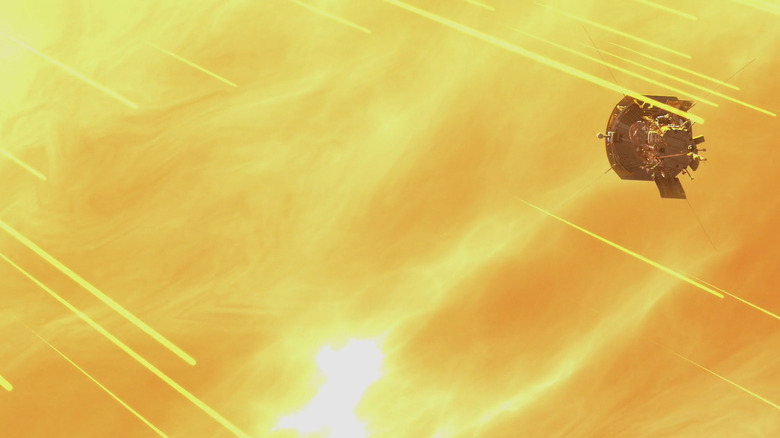NASA Is About To Launch The Fastest Manmade Object Ever
You've already heard plenty about the Parker Solar Probe over the past year or so, and with good reason. It's NASA's long-planned attempt to "Touch the Sun," and the probe will get far closer to our host star than any manmade object ever has. The mission will break ground in many different ways, but nobody seems to be paying attention to just how fast the plucky probe will actually be traveling.
NASA's plans for the probe include multiple orbits of the Sun, repeatedly slingshotting itself around the star and gathering vital science data each time it makes its approach. Its handlers will gradually bring the probe closer and closer to the Sun over its 6+ year mission, but by the time it begins its final orbits it's going to be moving faster than anything mankind has ever built before.
According to NASA, when the probe begins its final orbits it will be moving at approximately 430,000 miles per hour. That's... well, it's very, very fast. It's the fastest any manmade object will have ever traveled, and the probe will likely hold that title for a long time.
As NASA explains, the probe's first challenge will be to cancel out the speed at which the Earth is moving in relation to the Sun. It will have to push itself in the opposite direction of the Earth at approximately 53,000 miles per hours to achieve that, and it will be forced to use another planet to help it achieve that goal.
"Since Parker Solar Probe will skim through the Sun's atmosphere, it only needs to drop 53,000 miles per hour of sideways motion to reach its destination, but that's no easy feat," NASA notes. "In addition to using a powerful rocket, the Delta IV Heavy, Parker Solar Probe will perform seven Venus gravity assists over its seven-year mission to shed sideways speed into Venus' well of orbital energy. These gravity assists will draw Parker Solar Probe's orbit closer to the Sun for a record approach of just 3.83 million miles from the Sun's visible surface on the final orbits."
The mission is scheduled to get underway early Saturday morning. You can watch the probe launch live thanks to NASA's own live streams.
